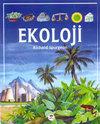Application of Sewage Sludge for Growing Alfalfa, Its Effects on the Macro-Micronutrient Concentration, Heavy Metal Accumulation, and Translocation
Q3 Environmental Science
引用次数: 8
Abstract
Alfalfa (Medicago Sativa) was grown by mixing sewage sludge at 0 (control soil), 20 (SSA2), 40 (SSA4), 60 (SSA6), and 80 (SSA8) t ha-1(w/w) amendment ratios to the soil. The soil pH decreased but, the electrical conductivity, organic matter, total N, available and total P, exchangeable and total K and Na, exchangeable Mg, DTPA-extractable Fe, Zn, Mn, Cu, Ni, Pb, and total Zn, Cu, Cr, and Pb increased in the soil. The shoot P, K, Ca, Mg, Fe, Zn, Mn, Cu, and root N, P, K, Na, Fe, Zn, Mn, Cu, Ni, and Cr concentrations increased but the root Mg concentration decreased in the plant. The translocation factor (TF) for Fe, Zn, Mn, and Cu (nutrients) increased at SSA2 and SSA4 as compared to SSA6, SSA8, and control soil. The TF was mostly higher than 1 for Zn, Cu, and Mn and for Fe it was lower than 1. The TF for Ni, Cr, and Pb (non-nutrients) was the highest in the control soil. The TF was lower than 1 for Ni and Cr in all treatments. For Pb it was more than 1 at SSA2, SSA4, and the control soil. The shoot bioconcentration factor (BCF) for Fe, Zn, Mn, and Cu at SSA2 and SSA4 were mostly higher than SSA6, SSA8, and the control soil. While the root BCF for Fe, Mn, Ni, and Cr were highest at SSA8, for Cu it was highest in the control soil. Both shoot and root BCF for all elements at all treatments were lower than 1. The total fresh and dried biomasses increased at SSA 2 , SSA 4 , and SSA 6 compared to the control soil, however, they were reduced by SSA 8 . The tolerance index (TIN) was greater than 100% for SSA 2 , SSA 4 , and SSA 6 . Although, the TIN was higher than 100% at SSA6, the value was lower than SSA2 and SSA4. It indicates that the plants are stressed at the amendments of sewage sludge at more than 40 ton ha -1 to the soil.污泥在紫花苜蓿种植中的应用及其对宏微量元素浓度、重金属积累和转运的影响
将污水污泥按0(对照土)、20 (SSA2)、40 (SSA4)、60 (SSA6)和80 (SSA8) t hm -1(w/w)添加到土壤中生长苜蓿(Medicago Sativa)。土壤pH值降低,但土壤电导率、有机质、全氮、速效磷、全磷、交换性钾、全钠、交换性镁、dtpa可萃取铁、锌、锰、铜、镍、铅和总锌、铜、铬、铅均升高。茎部P、K、Ca、Mg、Fe、Zn、Mn、Cu和根系N、P、K、Na、Fe、Zn、Mn、Cu、Ni和Cr浓度升高,而根系Mg浓度降低。与SSA6、SSA8和对照土壤相比,SSA2和SSA4土壤Fe、Zn、Mn和Cu(养分)转运因子(TF)增加。Zn、Cu和Mn的TF大多大于1,Fe的TF小于1。Ni、Cr和Pb(非营养物)的TF在对照土中最高。各处理中Ni和Cr的TF均小于1。在SSA2、SSA4和对照土中,Pb均大于1。SSA2和SSA4土壤铁、锌、锰和铜的地上部生物富集系数(BCF)大多高于SSA6、SSA8和对照土壤。土壤中Fe、Mn、Ni和Cr的根BCF在SSA8时最高,Cu的根BCF在对照土中最高。各处理下各元素的茎、根BCF均小于1。与对照土相比,ssa2、ssa4和ssa6的总鲜干生物量增加,而ssa8则减少。ssa2、ssa4和ssa6的耐受性指数(TIN)均大于100%。虽然在SSA6 TIN高于100%,但低于SSA2和SSA4。结果表明,污水污泥对土壤的影响超过40吨/公顷时,植物受到胁迫。
本文章由计算机程序翻译,如有差异,请以英文原文为准。
求助全文
约1分钟内获得全文
求助全文
来源期刊

Ekoloji
环境科学-生态学
CiteScore
1.10
自引率
0.00%
发文量
0
审稿时长
>12 weeks
期刊介绍:
Cessation. Ekoloji is an international journal that focuses on papers that report results from original research on all disciplines engaged in the field of environmental research. We welcome articles that cover the entire spectrum of environmental problems and environmental pollutants, whether chemical, biological or physical. Its coverage extends to all environmentally related issues: air and water pollution, solid waste, noise, recycling, natural resources, ecology and environmental protection. It includes articles on basic and applied environmental pollution research, including environmental engineering and environmental health. All types of pollution are covered, including atmospheric pollutants, detergents, fertilizers, industrial effluents, metals, mining wastes, oil, pesticides, plastics, radioactive materials and sewage. It also includes research papers on ecological and environmental issues such as climate change, biodiversity. The primary criteria for publication are scientific quality and ecological/environmental significance.
The journal will be read and contributed to by biologists, applied ecologists, environmental scientists, natural resource specialists, environmental engineers, environmental health specialists, agro-ecologists, veterinaries, agricultural engineers, landscape planners and designers. The journal welcomes full "research papers" and short "research notes", only in the English language.
 求助内容:
求助内容: 应助结果提醒方式:
应助结果提醒方式:


